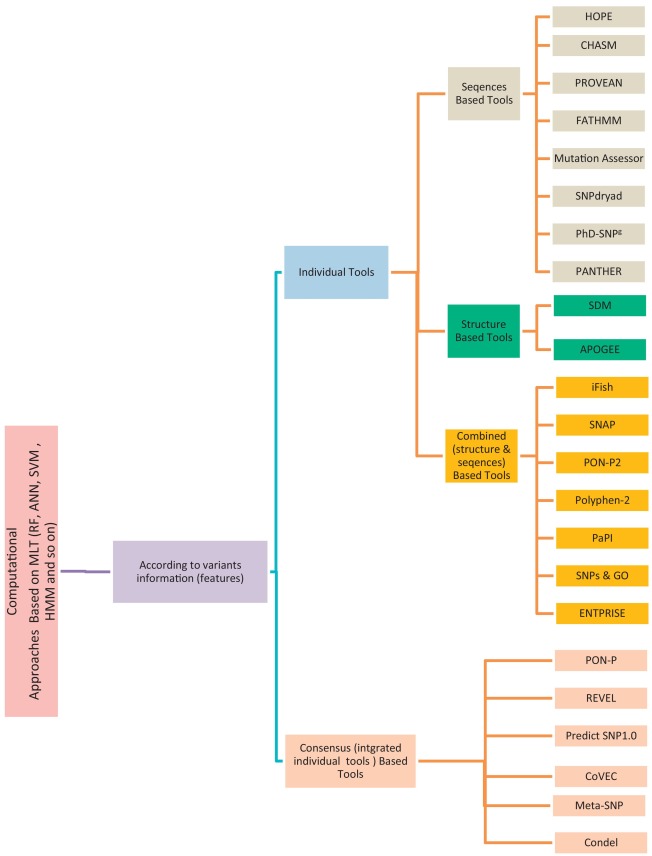Breadcrumb

Lecture Notes in Computer Science (including subseries Lecture Notes in Artificial Intelligence and Lecture Notes in Bioinformatics): Preface
[No abstract available]

A review study: Computational techniques for expecting the impact of non-synonymous single nucleotide variants in human diseases
Non-Synonymous Single-Nucleotide Variants (nsSNVs) and mutations can create a diversity effect on proteins as changing genotype and phenotype, which interrupts its stability. The alterations in the protein stability may cause diseases like cancer. Discovering of nsSNVs and mutations can be a useful tool for diagnosing the disease at a beginning stage. Many studies introduced the various predicting singular and consensus tools that based on different Machine Learning Techniques (MLTs) using diverse datasets. Therefore, we introduce the current comprehensive review of the most popular and recent
Towards scalable and cost-aware bioinformatics workflow execution in the cloud - Recent advances to the tavaxy workflow system
Cloud-based scientific workflow systems can play an important role in the development of cost effective bioinformatics analysis applications. So far, most efforts for supporting cloud computing in such workflow systems have focused on simply porting them to the cloud environment. The next due steps are to optimize these systems to exploit the advantages of the cloud computing model, basically in terms of managing resource elasticity and the associated business model. In this paper, we introduce new advancements in designing scalable and cost-effective workflows in the cloud using the Tavaxy

Feature selection in computer aided diagnostic system for microcalcification detection in digital mammograms
In this paper an approach is proposed to develop a computer-aided diagnosis (CAD) system that can be very helpful for radiologist in diagnosing microcalcifications' patterns in digitized mammograms earlier and faster than typical screening programs and showed the efficiency of feature selection on the CAD system. The proposed method has been implemented in four stages: (a) the region of interest (ROI) selection of 32x32 pixels size which identifies clusters of microcalcifications, (b) the feature extraction stage is based on the wavelet decomposition of locally processed image (region of
Extreme Points Derived Confidence Map as a Cue for Class-Agnostic Interactive Segmentation Using Deep Neural Network
To automate the process of segmenting an anatomy of interest, we can learn a model from previously annotated data. The learning-based approach uses annotations to train a model that tries to emulate the expert labeling on a new data set. While tremendous progress has been made using such approaches, labeling of medical images remains a time-consuming and expensive task. In this paper, we evaluate the utility of extreme points in learning to segment. Specifically, we propose a novel approach to compute a confidence map from extreme points that quantitatively encodes the priors derived from
Controlled alternate quantum walks based privacy preserving healthcare images in Internet of Things
The development of quantum computers and quantum algorithms conveys a challenging scenario for several cryptographic protocols due to the mathematical scaffolding upon which those protocols have been built. Quantum walks constitute a universal quantum computational model which is widely used in various fields, including quantum algorithms and cryptography. Quantum walks can be utilized as a powerful tool for the development of modern chaos-based cryptographic applications due to their nonlinear dynamical behavior and high sensitivity to initial conditions. In this paper, we propose new
Features selection for building an early diagnosis machine learning model for Parkinson's disease
In this work, different approaches were evaluated to optimize building machine learning classification models for the early diagnosis of the Parkinson disease. The goal was to sort the medical measurements and select the most relevant parameters to build a faster and more accurate model using feature selection techniques. Decreasing the number of features to build a model could lead to more efficient machine learning algorithm and help doctors to focus on what are the most important measurements to take into account. For feature selection we compared the Filter and Wrapper techniques. Then we
The case for docker in multicloud enabled bioinformatics applications
The introduction of next generation sequencing technologies did not bring only huge amounts of biological data but also highly sophisticated and versatile analysis workflows and systems. These new challenges require reliable and fast deployment methods over high performance servers in the local infrastructure or in the cloud. The use of virtualization technology has provided an efficient solution to overcome the complexity of deployment procedures and to provide a safe personalized execution box. However, the performance of applications running in virtual machines is worse than that of those

MC-GenomeKey: A multicloud system for the detection and annotation of genomic variants
Background: Next Generation Genome sequencing techniques became affordable for massive sequencing efforts devoted to clinical characterization of human diseases. However, the cost of providing cloud-based data analysis of the mounting datasets remains a concerning bottleneck for providing cost-effective clinical services. To address this computational problem, it is important to optimize the variant analysis workflow and the used analysis tools to reduce the overall computational processing time, and concomitantly reduce the processing cost. Furthermore, it is important to capitalize on the
Health Records Privacy Issues in Cloud Computing
Personal health record service avail patients to store and dominate their healthy information data through the cloud. Many users like medical doctors, health care providers and family members can access this data through the internet. However, there are privacy issues related to data exposure and data breaches, causing risk to patients' lives. Encryption techniques like public key encryption are applied but they are not efficient and very complex, in addition to scalability problems. In this paper, various multi-authority attributes based on encryption solutions features are discussed that
Pagination
- Previous page ‹‹
- Page 9
- Next page ››
